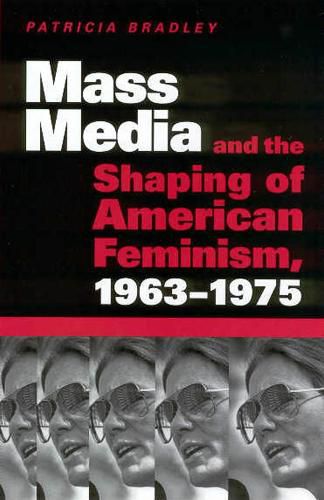Readings Newsletter
Become a Readings Member to make your shopping experience even easier.
Sign in or sign up for free!
You’re not far away from qualifying for FREE standard shipping within Australia
You’ve qualified for FREE standard shipping within Australia
The cart is loading…






This title is printed to order. This book may have been self-published. If so, we cannot guarantee the quality of the content. In the main most books will have gone through the editing process however some may not. We therefore suggest that you be aware of this before ordering this book. If in doubt check either the author or publisher’s details as we are unable to accept any returns unless they are faulty. Please contact us if you have any questions.
Beginning in 1963 with the publication of Betty Friedan’s The Feminine Mystique and reaching a high pitch ten years later with the televised mega-event of the Battle of the Sexes -the tennis match between Billie Jean King and Bobby Riggs-the mass media were intimately involved with both the distribution and the understanding of the feminist message. This mass media promotion of the feminist profile, however, proved to be a double-edged sword, according to Patricia Bradley, author of Mass Media and the Shaping of American Feminism, 1963-1975. Although millions of women learned about feminism by way of the mass media, detrimental stereotypes emerged overnight. Often the events mounted by feminists to catch the media eye crystalized the negative image. All feminists soon came to be portrayed in the popular culture as bra burners and strident women. Such depictions not only demeaned the achievements of their movement but also limited discussion of feminism to those subjects the media considered worthy, primarily equal pay for equal work. Bradley’s book examines the media traditions that served to curtail understandings of feminism. Journalists, following the craft formulas of their trade, equated feminism with the bizarre and the unusual. Even women journalists could not overcome the rules of What Makes News. By the time Billie Jean King confronted Bobby Riggs on the tennis court, feminism had become a commodity to be shaped to attract audiences. Finally, in mass media’s pursuit of the new, counter-feminist messages came to replace feminism on the news agenda and helped set in place the conservative revolution of the 1980s. Bradley offers insight into how mass media constructs images and why such images have the kind of ongoing strength that discourages young women of today from calling themselves feminist. The author also asks how public issues are to be raised when those who ask the questions are negatively defined before the issues can even be discussed. Mass Media and the Shaping of American Feminism, 1963-1975 examines the media’s role in creating the images of feminism that continue today. And it poses the dilemma of a call for systematic change in a mass media industry that does not have a place for systematic change in its agenda.
$9.00 standard shipping within Australia
FREE standard shipping within Australia for orders over $100.00
Express & International shipping calculated at checkout
This title is printed to order. This book may have been self-published. If so, we cannot guarantee the quality of the content. In the main most books will have gone through the editing process however some may not. We therefore suggest that you be aware of this before ordering this book. If in doubt check either the author or publisher’s details as we are unable to accept any returns unless they are faulty. Please contact us if you have any questions.
Beginning in 1963 with the publication of Betty Friedan’s The Feminine Mystique and reaching a high pitch ten years later with the televised mega-event of the Battle of the Sexes -the tennis match between Billie Jean King and Bobby Riggs-the mass media were intimately involved with both the distribution and the understanding of the feminist message. This mass media promotion of the feminist profile, however, proved to be a double-edged sword, according to Patricia Bradley, author of Mass Media and the Shaping of American Feminism, 1963-1975. Although millions of women learned about feminism by way of the mass media, detrimental stereotypes emerged overnight. Often the events mounted by feminists to catch the media eye crystalized the negative image. All feminists soon came to be portrayed in the popular culture as bra burners and strident women. Such depictions not only demeaned the achievements of their movement but also limited discussion of feminism to those subjects the media considered worthy, primarily equal pay for equal work. Bradley’s book examines the media traditions that served to curtail understandings of feminism. Journalists, following the craft formulas of their trade, equated feminism with the bizarre and the unusual. Even women journalists could not overcome the rules of What Makes News. By the time Billie Jean King confronted Bobby Riggs on the tennis court, feminism had become a commodity to be shaped to attract audiences. Finally, in mass media’s pursuit of the new, counter-feminist messages came to replace feminism on the news agenda and helped set in place the conservative revolution of the 1980s. Bradley offers insight into how mass media constructs images and why such images have the kind of ongoing strength that discourages young women of today from calling themselves feminist. The author also asks how public issues are to be raised when those who ask the questions are negatively defined before the issues can even be discussed. Mass Media and the Shaping of American Feminism, 1963-1975 examines the media’s role in creating the images of feminism that continue today. And it poses the dilemma of a call for systematic change in a mass media industry that does not have a place for systematic change in its agenda.